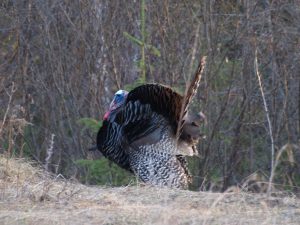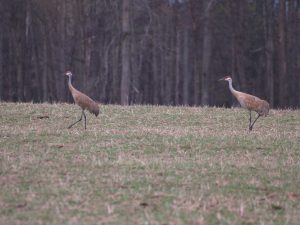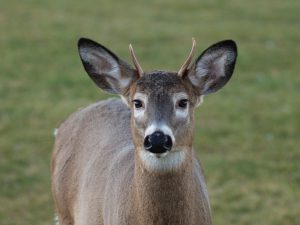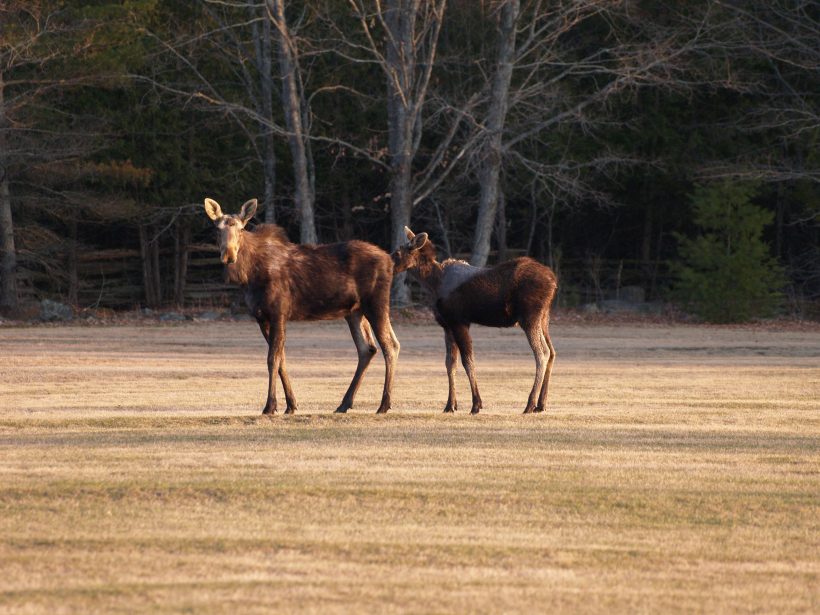MOOSE and CWD
Recently I read that many moose die from Chronic Wasting Disease which countered what I recently had written based upon information received from the MNRF. So, I contacted Jolanta Kowalski of the ministry for verification. Here is her response:
“While CWD affects all members of the deer family (white-tailed deer, American elk, moose and woodland caribou, and other non-native cervid species), some species appear to be more susceptible to the disease than others. Since 2005, there have only been 11 reported cases of CWD in moose in North America, compared to many thousands of CWD cases in deer. The low prevalence of CWD in moose may be due to differing genetic factors, exposure risks and/or behaviour. For example, moose tend to group together less than white-tailed deer, which may decrease their risk of exposure to CWD.”
ONTARIO’S 2019 WILD TURKEY HUNTS
To date Patrick Hubert, a Senior Wildlife Biologist with the MNRF, states that the estimated provincial wild turkey population still hovers at 70,000. With citizen scientists contributing and at least one university study underway expect that number to be up-dated in the near future.
With the new hunting regulations taking effect Hubert tells me that compliance with mandatory hunter reporting in the Spring of 2019 was approximately 69% and 75% from the Fall hunt. In translation that means the MNRF heard from 31,000+ hunters in the Spring and 3,800+ in the Fall. Compare that to fewer than 7000 that would have reported from the Spring hunt in the recent past and a few hundred at most from the Fall season.
“While the compliance was lower than desired, the ministry recognizes this was the first year of implementation, and some turkey hunters may not have been aware of the change. This number is at a level that reduces concern about bias with the results.”
Hubert added that “it’s clear that many hunters were aware of the new requirements.”
When asked about the fluctuating proportion of legally harvested “bearded hens” in any given year Hubert responded that those numbers are probably more likely an indication of how many other birds were available for harvest than an indication of increasing or decreasing numbers of “bearded hens.”
The MNRF is in the midst of reviewing the 2019 data and so the final reporting of the 2019 results were not available as you will see in the following chart.

| 2016 | 2017 | 2018 | 2019 | |
| Spring licenses sold | 50783 | 58120 | 53411 | 52955 |
| Spring harvest | 7163 | 7763 | 7364 | |
| Fall licenses sold | 3461 | 5257 | 4685 | 5079 |
| Fall harvest | 199 | 225 | 239 | |
| % jakes in spring | 31 | 32 | 20 | |
| % hens in spring | 0.59 | 0.50 | 0.35 | |
| % hens in fall | 56 | 50 | 56 | |
| Days to harvest first bird in spring | 3.03 | 2.77 | 2.83 |
The MNRF no longer collects information on the time of day when the harvest occurred.
With the new regulations hunters no longer have to report by noon the day after they harvest a bird – “they need to wait until they are done hunting in the spring and submit a single report on all their spring turkey hunting activity and harvest. Hunters now have up to 14 days from the end of the season to submit their report.” (Hubert)
SANDHILL CRANE RESEARCH

I have rarely seen Sandhill Cranes locally but on Manitoulin Island they have been as welcomed by farmers as the elk were hereabouts. And so for some years there has been a move to open a Sandhill Crane hunt. After all it seems to have worked with the elk. Currently the Canadian Wildlife Service (CWS) and Environment and Climate Change Canada (ECCC) have been researching the cranes of Manitoulin. Funding has been provided by the Ontario Soil and Crop Improvement Association (OSCIA). Using GPS transmitters the study is collecting movement data of the cranes in addition to a large scale study of breeding, staging and how the timing of the cranes’ migration leads to conflicts. The study will continue for three years. A Sandhill Crane hunting season is one practical tool to be considered when it comes to resolving the agricultural issue.
They are also looking at studies in which a new seed additive is used in the U.S. to discourage the cranes from destroying crops.

CWD
In the Fall of 2018 Chronic Wasting Disease was discovered on a domestic deer farm in Avoca, Quebec. The Quebec government has reported that efforts to prevent CWD from spreading to wild whitetail deer have been successful. Wildlife management authorities created an enhanced management area where hunting regulations were relaxed in order to reduce the deer population. However, as readers know, once the CWD prions are in the soil they are indestructible. So, once in the wild, it is impossible to completely eradicate CWD. Only New York State claims to have done so – presumeably among living animals – since the disease was discovered there.
Plants can absorb the CWD prion from soil contaminated from contact with the infected deer, their feces, urine or blood. The plants absorb the prion and can transfer the disease to other deer that eat the plants.
No positive samples of CWD from wild deer or other cervids (members of the deer family) in the region of Quebec have been found.
The incubation period for CWD takes from 16 to 36 months according to the Quebec Ministry of Forests, Wildlife and Parks (MFWP) before infected animals show signs of the disease and testing has been generally ineffective at detecting CWD in animals infected for less than 12 months.
In the region around the Avoca farm the ministry will continue to maintain a low-density deer population while continuing enhanced surveillance for CWD. New regulations have been enacted regarding moving or possessing certain parts of deer slaughtered near the affected farm as well.
There have been no cases of CWD in wild deer in Ontario. However, in the 1970s mule deer at the Metro Toronto Zoo died of an unspecified disease and samples of tissue from those deer have been re-tested with the revelation that it was in fact CWD.
In Quebec the municipality of Grenville-Sur-La-Rouge effectively made deer farming impossible by limiting it to a very small portion of the municipality and requiring deer to be always inside a barn. A new, 2019 CWD program restricts movement of live, domestic cervids in Ontario.
AND FINALLY…
An older gentleman was being prepped for surgery which was to be done by his son, the surgeon. “Do your best son, and remember, if it doesn’t go well your mother will be moving in with you and your wife.”
